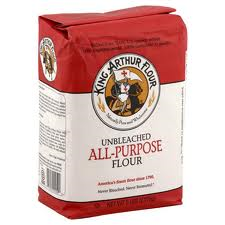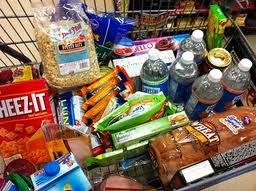Are YOU Bugged?
By Alice Osborne
Well, I am sure bugged (corny pun intended—read on to see how and why). In preparing to make crackers, I pulled some millet flour from my pantry, and doggone it if I didn’t find weevil! I’ve lost my sense of humor—I don’t have time for this mess!

And mess it is, and get this, there are several different kinds of weevils we ought to be aware of. They’re a family called “pantry pests” and they include Rice Weevils, Granary Weevils, Grain Moths, Grain Bores, Drugstore Beetles, Tobacco Beetle, Indian Meal Moth, Confused Flour Beetle, and Red Flour Beetles. Fun.
They are typically small and do not grow more than ¼ inch or 6 millimeters. They have an appetite for stored food products (people and pet foods) such as: flour, cereal grains, dry pasta, dry pet food, powdered milk, corn starch, crackers, spices, breads, bird seed, dried nuts and dried fruit.

They become especially troublesome when these foodstuffs are stored in paper containers and go unused for extended periods of time (as my millet flour did—grrrrr). To know if weevils are present in a bag of food, look for granules stuck together, as if they have been entangled in a cobweb. These pests are important to the householder because they cause food waste and infestations can be persistent.
All the information I read on the topic did have one comforting thing to say: Their presence in the home does not necessarily reflect on the quality of the housekeeper. Thank you for that one!
Now here’s what we need to know: Weevil spend most of their life in the infested material, and are usually similar in color to the food that they are living in. The eggs of these insects are quite small and usually go unnoticed.
The purple stage may take place away from the infested food in corners or cracks in the cupboards or packaging. The length of time to complete their life cycle varies greatly, depending on temperature, relative humidity, and the quality of the food supply.

And speaking of packaging, weevil are usually brought into the home in an infested package of food. The pantry pest (such as the Indian meal moth, for instance) usually is imported in products we bring in from the grocery store.
It is important, then, to practice weevil control measures before it gets too late. On a very cool site, www.howtogetridofstuff.com, I found this elimination and prevention advice, along with the comforting words that weevil aren’t difficult to get rid of if we consistently follow these tips:
- Never mix your newly-bought food with the old stuff. The infested products will affect the other food.
- If your packaged goods are infested, the weevils may be coming from the warehouse or the food processing factory or plantation. If this is the case, don't buy the item if its seal is broken or the package itself is damaged. You can also exchange the broken package for another one, especially if you see it before you leave the store. Broken packages are more likely to be infested than those perfectly sealed.
- To make sure that food is free of pests, store it for a whole month in clear bags, since some adults need more time to emerge anyway.
- If you are going to store food in a container, make sure that the container is clean. Wash it before putting fresh food in it. If not, then contamination may take place, paving way to another case of infestation.
 Clean your shelves regularly to prevent infestation. This way, there is a higher chance that you can get rid of pantry pests. Make sure that you practice periodic cleaning because weevils do not need a lot of food. They can live with just a very small amount of grain or cereals to reproduce, breed and live.
Clean your shelves regularly to prevent infestation. This way, there is a higher chance that you can get rid of pantry pests. Make sure that you practice periodic cleaning because weevils do not need a lot of food. They can live with just a very small amount of grain or cereals to reproduce, breed and live.- There will be times when you don't know if an item is infected or not. Control weevils by placing the pack of food in an area where you will easily see them if they come.
- If you have already opened a bag of, say, oats or cereal, then keep it in a storage place or container with a tight-fitting lid. Bulk foods such as pet foods must also be stored in a container with a lid that’s tight-fitting.
- Be double-sure that storage units and cabinets are tight and clean.
- Do not underestimate the power of dry storage units. Moisture contributes a lot in the development of pantry pests.
- Pantry pests gather in a bag. There is no way you cannot see the pests accumulating in it. Once you see the pantry pests, immediately discard the contaminated foodstuff.
- BOTTOM LINE? Regularly rotate food; just don't leave it sitting around for too long (like my millet flour—grrrr).
And some final weevil data: The most favorable temperature for pantry pests is about 80°F. Above 95°F or below 60°F, reproduction and survival is greatly reduced. When temperatures are lowered, insect activity decreases until all activity stops. The quicker the drop in temperature, the quicker the kill. Although insects will be killed, their bodies will remain in the food unless sieved out.

Thus, our freezer can be a real help here: An exposure of 2 to 3 days to temperatures of 5°F or lower kills the more susceptible stages (larvae and adults), but eggs require longer to kill (3 weeks). An alternative is to freeze the food for a week, remove it from the freezer for a few days, and then refreeze it for another week. Now I understand why my mother would always put flour, cereals, boxed dinners, and actually all grain-related foods in the freezer when she’d bring the groceries home. I wish I’d followed her example, then I probably wouldn’t be bugged!

